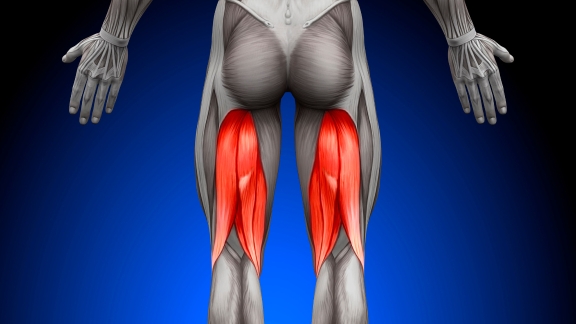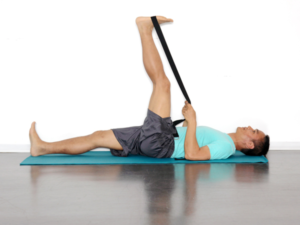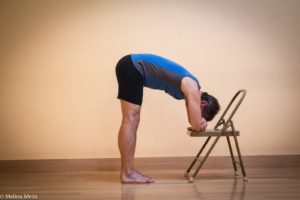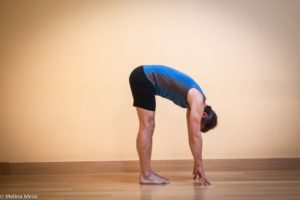Most cyclists focus on the performance of the quads and glutes, but the hamstrings are one of the main muscle groups activated cycling. So, it makes sense that they are often a source of pain or discomfort, but taking time to stretch tight hamstrings can make all the difference.
The hamstrings run down the back of your leg from your hips, crossing behind your knee joint. The upper portion of the hamstring is where your power comes from as you push the pedal in the down stroke. The lower part is activated as you pull, reach the up stroke and bend your knee. The muscle works as a whole, but it’s important to think of these two general parts, so you can target stretching to different areas of the muscle.

The Effect of Bike Position
The position the body is in on the bike does put some strain on the hamstring, and not just in the pedaling motion. When we spend a lot of time bent over to reach the handlebars, two things tend to happen:
- The upper hamstring is stretched, so if the muscle is not flexible enough to comfortably maintain this position, you will likely compensate by adjusting other parts of your posture.
- The lower hamstring remains bent at the knee, which can cause the muscle to actually become shortened.
These two aspects can lead to imbalance within the muscle which can, in turn, cause pain and injury.
 Hamstring Strain
Hamstring Strain
Technically speaking, a strain is micro-damage within the muscle fibres from being overstretched and over exerted. The only thing you can do is take adequate time to rest, ice the area, and elevate it when possible.
Hamstring strain can be a result of grinding in too high of a gear at a low cadence. It can also happen if you go too hard or too soon, not giving your muscles the time to adapt and strengthen. This is most often an issue at the beginning of the season, as you may want to pick up right where you left off, but your body just isn’t ready.
Prevention through strengthening and stretching
The easiest way to avoid hamstring pain and strain altogether is strengthen and stretch. This means slow progress, so monitor your training load and frequency to ensure you avoid overuse injuries. Some strength training, with exercises like squats and deadlifts, can keep the muscles strong and engaged, especially when you aren’t riding as much.
Doing a daily stretching routine is the best way to prevent hamstring injuries and stretch tight hamstrings. It works to keep the muscle balanced, and the upper portion from shortening as a result of the cycling position.
How to stretch tight hamstrings
Reclining Hand-to-Toe

You will need a yoga strap, or a tie or belt, for this stretch. Start by lying on your back on a soft surface (like a yoga mat), bend your knee into your chest and place the strap around the arch of your foot. Slowly extend the foot up towards the ceiling, straightening the leg by contracting the quadriceps. You don’t want to completely lock the knee, but keep a slight bend.
Standing Forward Bend with Chair

You will need a chair for this stretch. Stand with your feet shoulder-distance apart, bending your knees slightly. Slowly bend forward toward the chair, resting your head on your forearms. To increase the stretch down the back of the legs, push your hips up, driving your weight through your heels. Roll up one vertebra at a time.
Standing Forward Bend

Stand with your legs shoulder width apart. Hinge at your hips and slowly bring your fingertips to the floor as you use the weight of your torso to stretch the back of the legs. If you can’t reach the floor, use a block or stack of books to support yourself on.